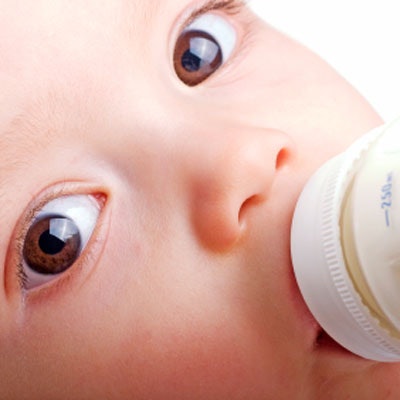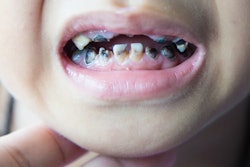
What might motivate parents to take steps that could prevent early childhood caries (ECC)? To find out, researchers studied the emotional responses of mothers of 1-year-old children to visual stimuli and text related to the risks of developing dental caries.
In this pilot study, investigators found that visual stimuli with negative pictorial and text warnings produced the strongest emotional responses. They identified stimuli that could be used in future motivational materials.
"We believe that intervention within prevention of ECC should be targeted at mothers as they play an important role in health behavior of the whole family, especially infants," wrote the study authors, led by Michaela Bartosova, PhD, an assistant professor in the stomatology department at Masaryk University in Brno, Czech Republic (BMC Oral Health, February 18, 2019).
What's the impact?
Information about dental caries prevention tends to be presented as a professional recommendation communicated in emotionally neutral text, the authors noted. These "evidence-based recommendations" produce positive emotions in healthcare providers but can be difficult to understand for nonpractitioners, they added.
“We believe that intervention within prevention of ECC should be targeted at mothers as they play an important role in health behavior of the whole family, especially infants.”
In the current study, they sought to determine which visual stimuli and accompanying text produced the strongest emotional response in mothers of young children that could be used to help prevent early childhood caries.
They presented study participants with an electronic questionnaire containing 20 visual stimuli illustrating either risk factors of caries in children or appropriate behavior for mothers in caring for their children's teeth. Each included verbal descriptions, warnings, or instructive information.
The researchers expected that 10 of the visual stimuli would elicit a positive response and the other 10 a negative response. They portrayed the most severe conditions in unpleasant-appearing pictures, with the positive ones showing the goals of caries prevention. The study included 39 mothers of 1-year-olds, and the participants received an email with a link to the electronic questionnaire.
The participants rated each of the following items on three scales, each running from 1 to 9:
- Emotional valence, which indicated how the item made the participant feel
- An arousal scale, ranging from calm to excited
- A dominance scale, which indicated participants' subjective sense of control over the emotion produced by the images
The stimuli included the following:
- Lack of mother's care for her infant's teeth causes tooth decay.
- Neglecting care of your child's teeth leads to serious complications.
- An untreated tooth also can endanger your child's life.
- Sleeping with a bottle increases the risk of tooth decay.
- By avoiding kissing baby on the lips, you reduce the risk of transmission of bacteria that cause tooth decay.
- A visit to the dentist can be painless.
- We do not offer sweetened drinks to children.
The first three stimuli listed above had the highest potential to cause a strong emotional response, the researchers found. They also discovered a highly statistically significant relationship between the expected and observed emotions reported for the visual stimuli (they expected 10 negative and 10 positive responses and instead reported eight negative and 12 positive responses [p < 0.05]), with the real emotional response matching the intended one in 90% of cases. The participants experienced a greater emotional response to text with a warning than informative instruction.
While the mothers did not report significant loss of control over evoked emotions, the researchers found that the mothers had a higher feeling of control with more positive stimuli and lower control with higher arousal (p < 0.05).
Limited response
The study's biggest limitation was its relatively small number of participants. Additionally, the authors pointed out that mothers who engaged in riskier behavior regarding their children's oral health may have been less likely to participate in the study.
They plan to conduct further research on the use of visual stimuli in reducing early childhood caries.
"In the future follow-up study, we intend to create a portfolio of emotionally charged stimuli (images with texts) and then verify their effectiveness in behavioral intervention," they concluded. "The stimuli material can be a beta version for a motivational interview or a smartphone application."



















